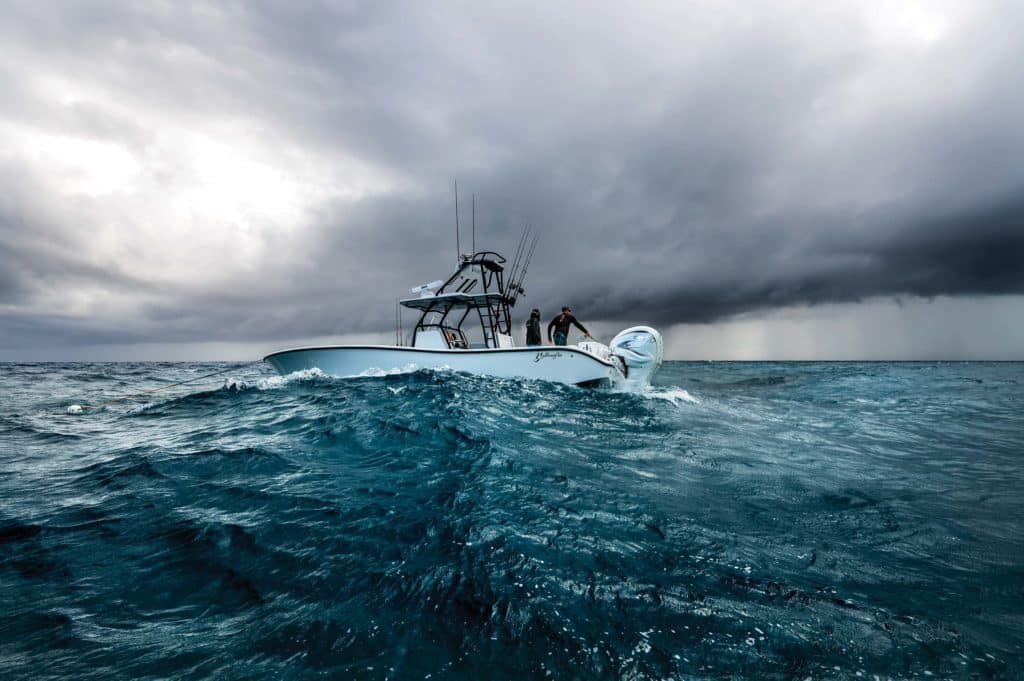
Ever wonder why some anglers excel at fishing wrecks while your success seems to be a hit-or-miss proposition? The way you anchor your boat could be a major reason.
It’s not only where you drop anchor, but also the type of anchor you use, how much chain you have on it, and how much rode (anchor line) you put out, says Capt. Chris Lemieux of Boynton Beach, Florida. He adds that where and how you anchor affect the presentation of your chum and baits, and also determine whether you lose fish to the wreck or safely get them to your boat.
Anchor Choices
Lemieux catches everything from sailfish and kingfish to wahoo, dolphin and swordfish in South Florida waters, but he specializes in fishing artificial reefs and wrecks in 50 to 250 feet for snapper and grouper. He says being prepared for all types of anchoring conditions—whatever the location of the wreck, and the direction and strength of the wind and current—is key to success, so he carries two types of anchors on his Conch 27.
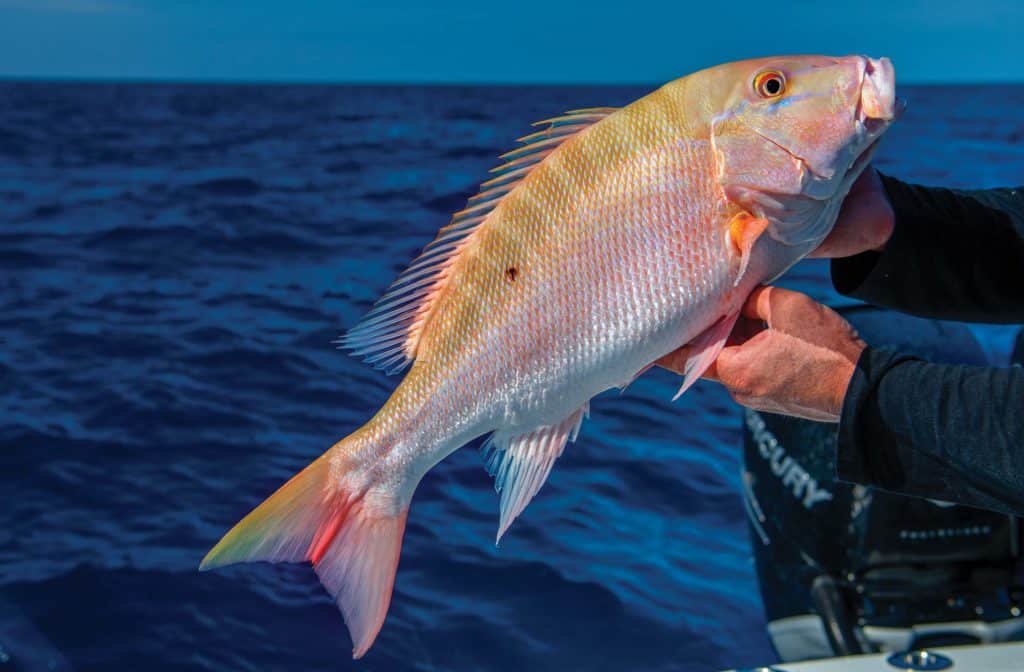
“Most artificial reefs are on sand, so you usually need a fluke anchor to fish them,” Lemieux says. “When anchoring on rock, I use a claw or grapnel anchor rigged breakaway-style with zip ties.” Instead of attaching the chain directly to the D-ring at the top, he fastens it to the eye at the bottom of the anchor. He then runs the chain along the anchor shaft and connects it with zip ties to the D-ring. “If the anchor gets really stuck in the rocks, you just slide a retrieval buoy down the anchor line and drive the boat forward. The zip ties will break, letting the chain pull the anchor backward, away from the rocks. If you use a sand anchor in that situation, it will often bend and come up looking like a pretzel. So you have to know the bottom you’re on prior to throwing an anchor overboard.”
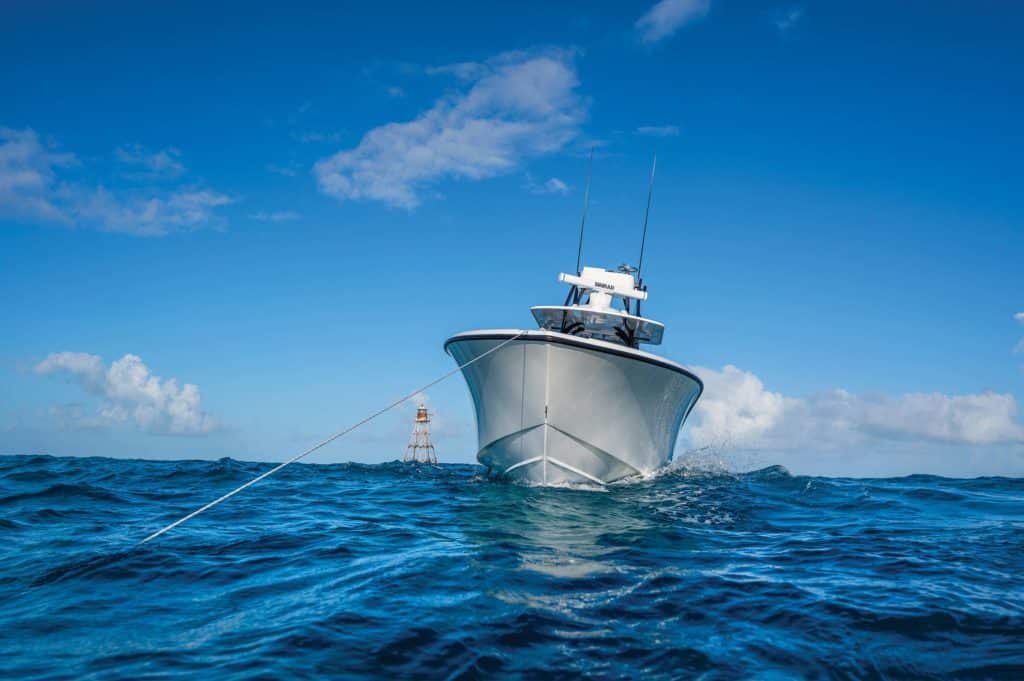
Rode Work
Anchor size depends on the size of your boat, and most anchor manufacturers have charts to help you make the right choice. The amount of rode should be at least twice the depth of the water, but more is better. “If you’re going to anchor in 150 feet, you need a minimum of 300 feet of line,” Lemieux explains. “If you don’t put enough out and seas suddenly get rough, the anchor may pull free, and you’ll have to retrieve and reset it, which can mess up the bite.
“Even if you usually fish in 50 or 60 feet of water, you gotta have enough rode. I carry some 600 feet. When I fish for muttons on wrecks in 180- or 200-foot depths, I’ll put out 400 or 500 feet of rode when I anchor, depending on the conditions.”
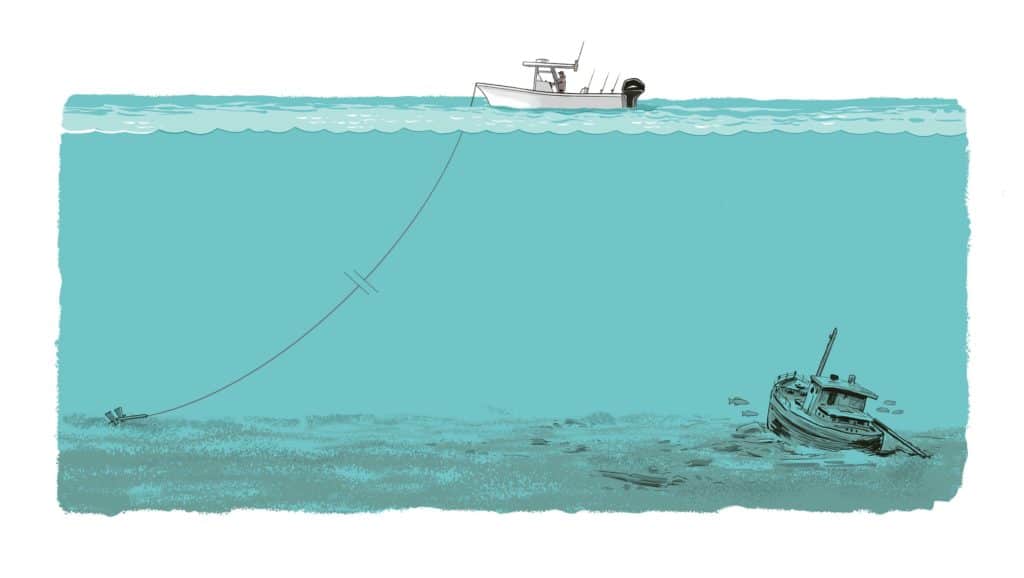
There’s not much give with a shorter rode and, combined with the steeper angle of the pull, it frequently yanks the anchor free when you’re bouncing up and down, and dealing with a strong wind or current. By contrast, Lemieux adds, “More rode helps the anchor dig down into the bottom.”
Chain Reaction
Too many boats don’t have enough chain between the anchor and rode. “Chain is one of the most important things in the whole setup,” Lemieux says. “Most have only 6, 8 or 10 feet.”
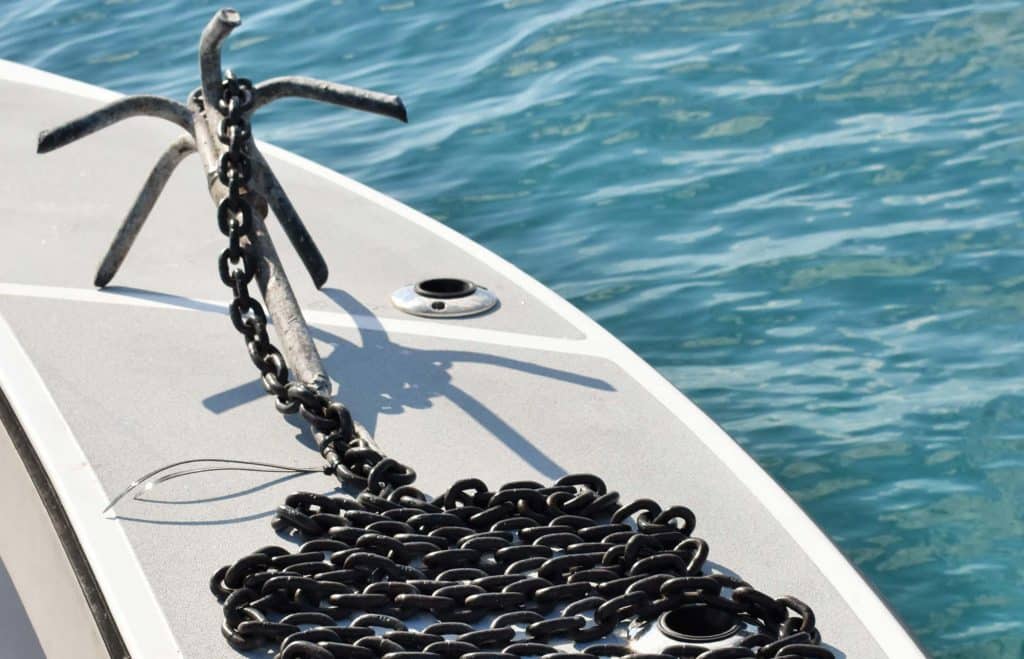
The weight of the chain holds the anchor down as it digs into the bottom, and the bigger the boat, the more chain it needs. For a 30-plus-foot center-console, Lemieux recommends at least 30 feet of galvanized chain, which weighs twice as much as stainless steel. There’s also a proper way to deploy the anchor to avoid tangles on the way down. “Once the anchor hits the water, let out 10 or 15 feet of rode, then wait for the anchor to come tight before letting out the rest of the rode.”
Get Set
When coming up on a wreck, Lemieux says it’s critical to determine which way the boat will drift. He approaches up-current and drifts past the structure, noting the speed to estimate how far ahead he needs to drop the anchor so the boat is positioned correctly.
“The first thing you have to figure out is which way the boat’s going to set up, before you get to the spot,” he says. “I’d rather set up ahead of a wreck than behind it because if you’re too far ahead of it, you can dump more rope and get the boat closer to the wreck. That’s another reason why I carry a ton of rode. If you’re on top of the wreck, then you have to pull the anchor and readjust.
“You can fish behind a wreck and catch some fish, but generally you want to be ahead of the wreck so you pull fish away from it. You want to put baits in the sand, especially for muttons and grouper because they hang in the sand more than in the wreck or above it.”
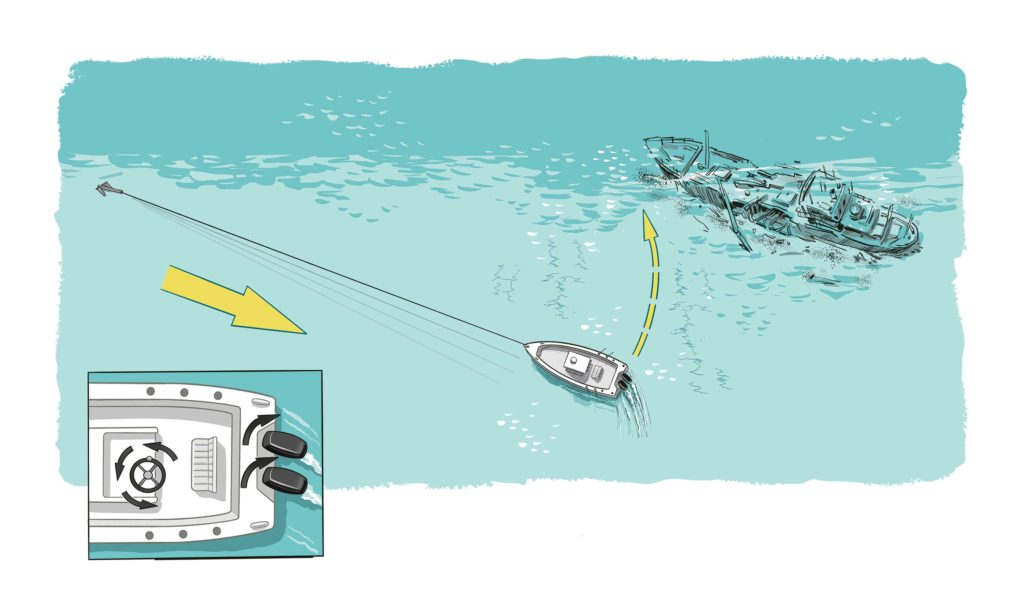
Lemieux acknowledges that experience is the key to figuring out where to anchor. He knows how his boat drifts and how fast it is going to drift given the wind and current. For example, if he’s drifting at 2 mph according to his GPS, he wants to be 300 yards ahead of the wreck so he’ll be where he needs to be when the anchor comes tight.
If his boat is moving too fast, he’ll tighten the anchor line sooner than he normally would so he doesn’t end up too close to the wreck. If the drift is slower than he anticipated, he lets out a little more rope. “If I’m starting to mark fish, I don’t want to go any farther. If I’m still 100 yards away from the structure, I let out more rope. There’s no exact science to it because sometimes there’s not much current on the surface, but there’s a lot down below or vice versa. Some days, I’ve had zero current. Or if you have a south current, you have to set up on the north side of a wreck. Every day is different.”
Read Next: Quick-Release Anchoring Methods
Lemieux admits he doesn’t always set the anchor correctly on the first drop. “Sometimes it takes two or three tries to set up on a spot, but if the fish are biting, it’s worth it,” he says. If he’s a bit east or west of where he wants to be when the anchor comes tight, and the current is strong, he turns his outboards, using them as rudders to swing his boat closer to the wreck.
Retrieval Tactics
Lemieux uses an anchor-release buoy, which has a ring that clips around the anchor rode, to retrieve his anchor easily. As he drives forward, water pressure slides the buoy down the rode, lifting the anchor off the bottom. He drives until the anchor reaches the ring and the ball bounces on the surface, then circles back and pulls in the slack.
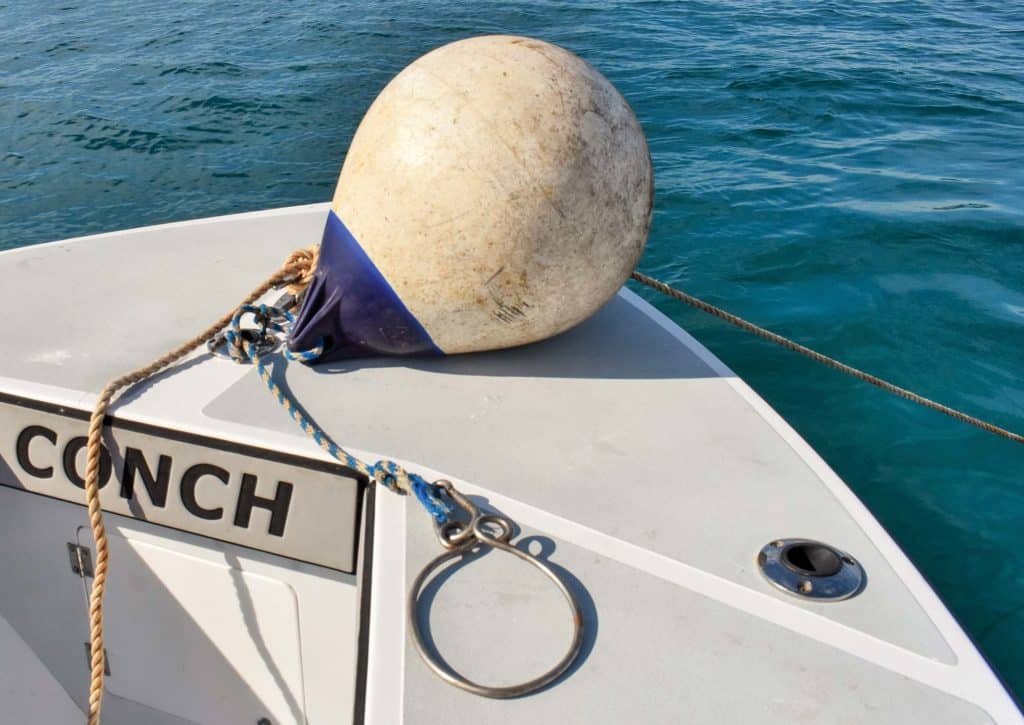
If the anchor is stuck on the bottom, Lemieux says to keep going forward to break it free. If that doesn’t work, drive in circles to change the pull angle. Under no circumstances, he warns, should you attach the anchor rode to the boat transom. When it comes tight, it can pull the back of your boat down and let waves break over the transom.
Anchoring Essentials
As with any worthwhile endeavor, you need to carry the right tools for easier and successful anchoring.
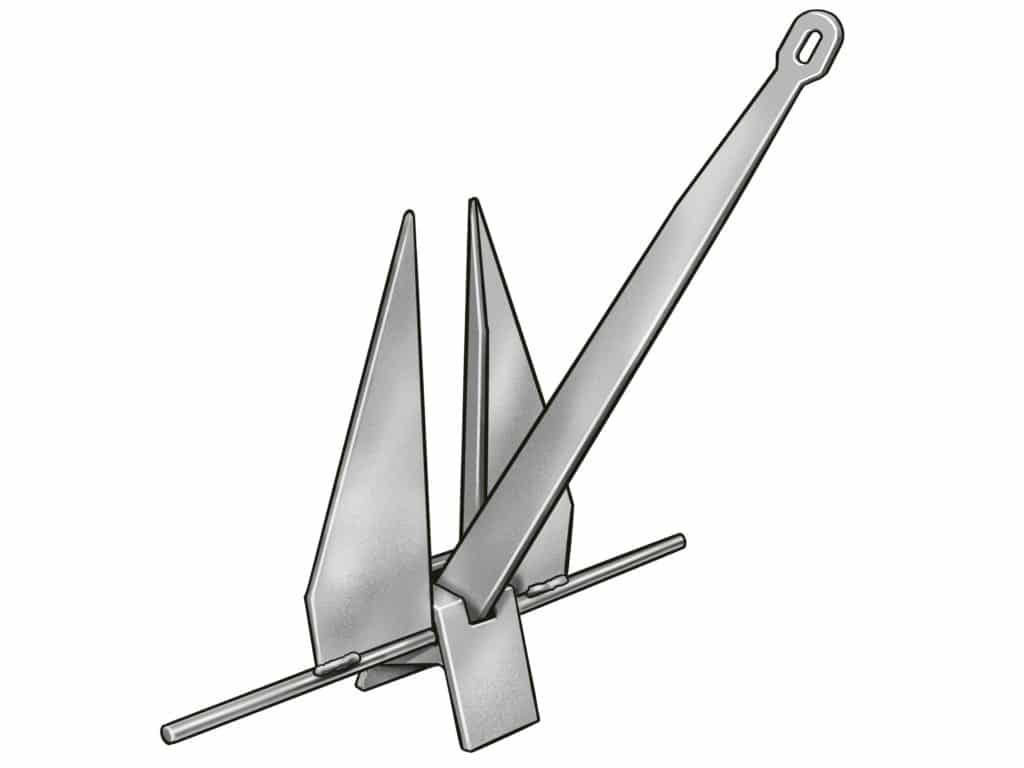
This anchor sets and holds well on sand bottom, but deploy it carefully so neither the chain nor the rode can foul the flukes on the way down.
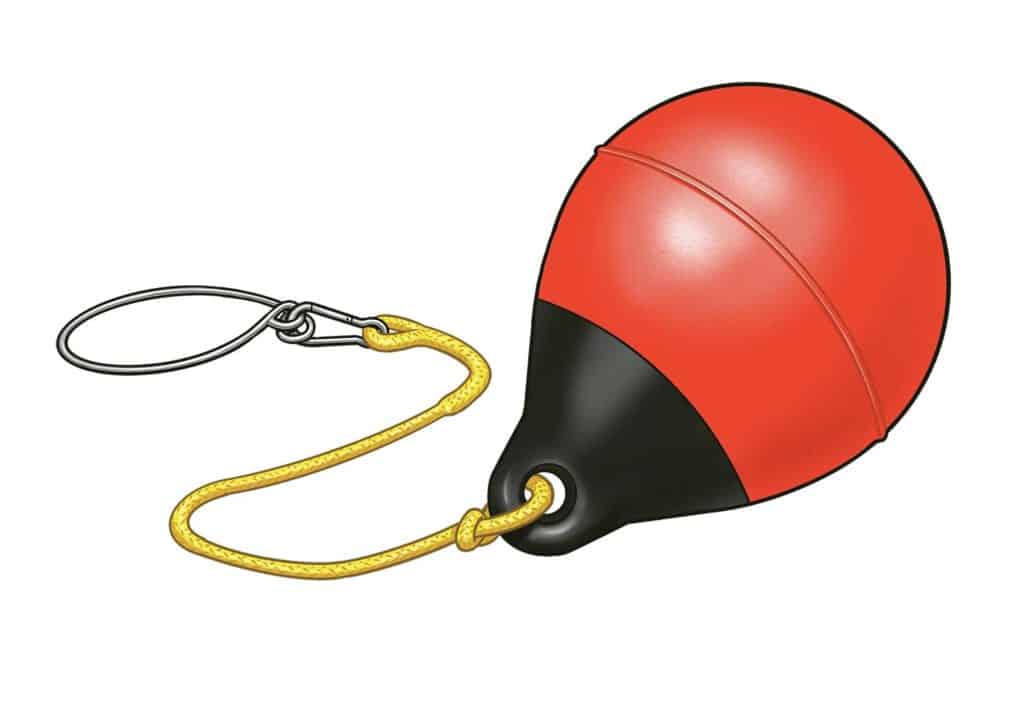
This simple setup uses the boat to get the anchor off the bottom. You just take in slack rode, and can avoid having a sore back, arms and shoulders.
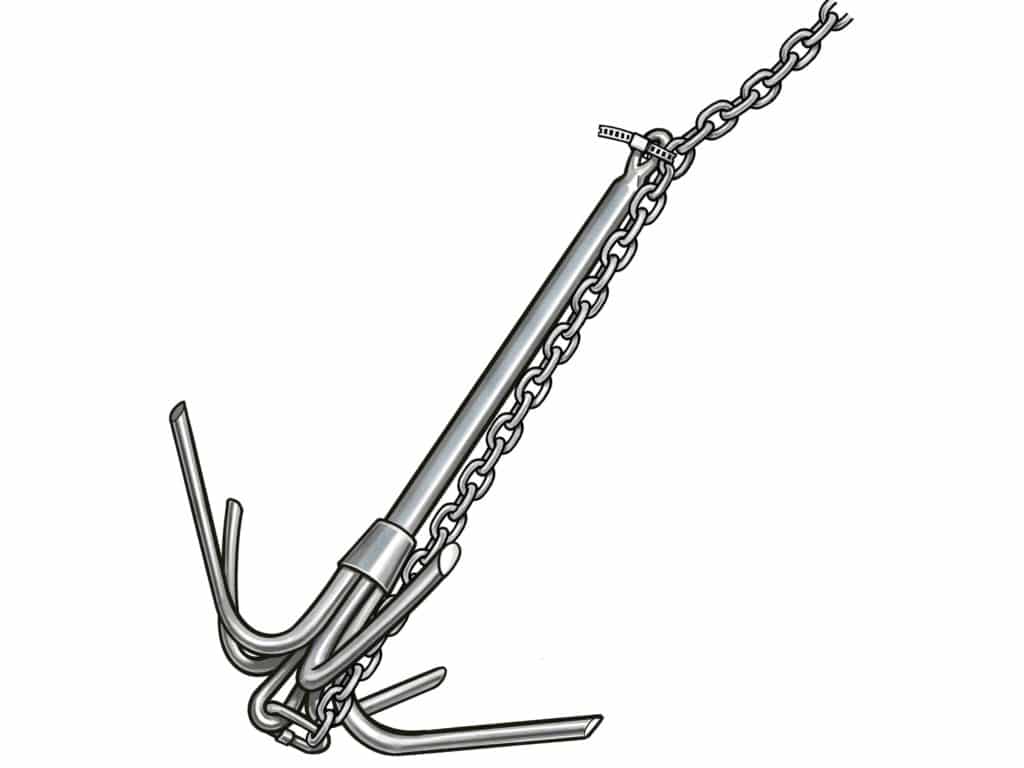
Best for rocky bottom, the chain affixed to the crown and zip-tied at the top provides breakaway retrieval if it gets stuck.









